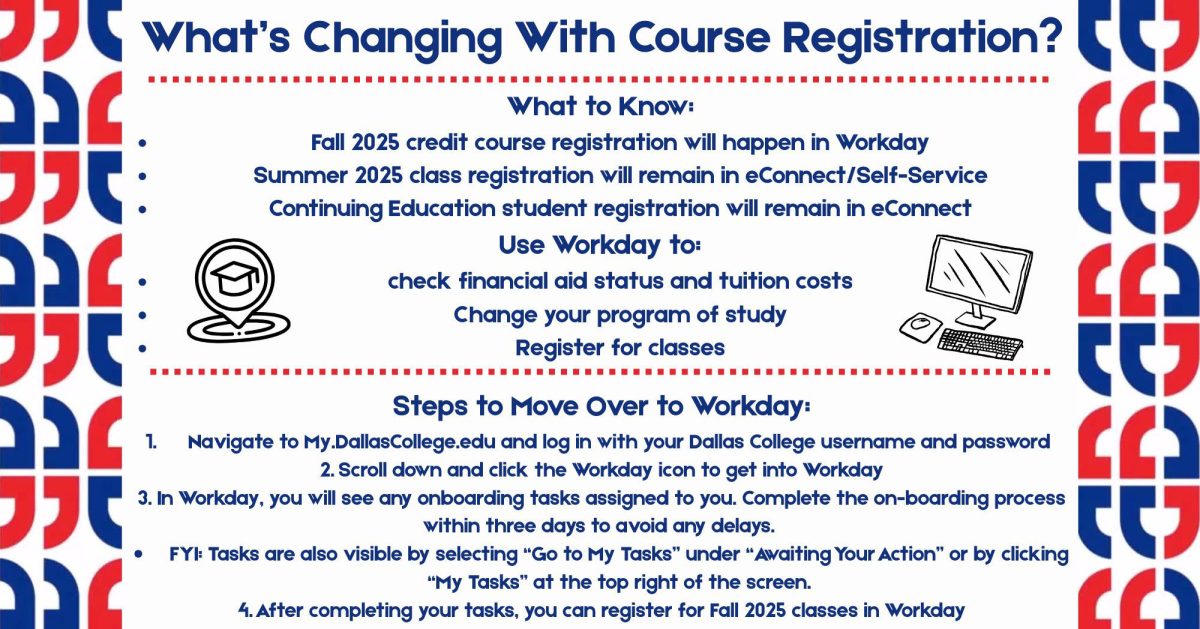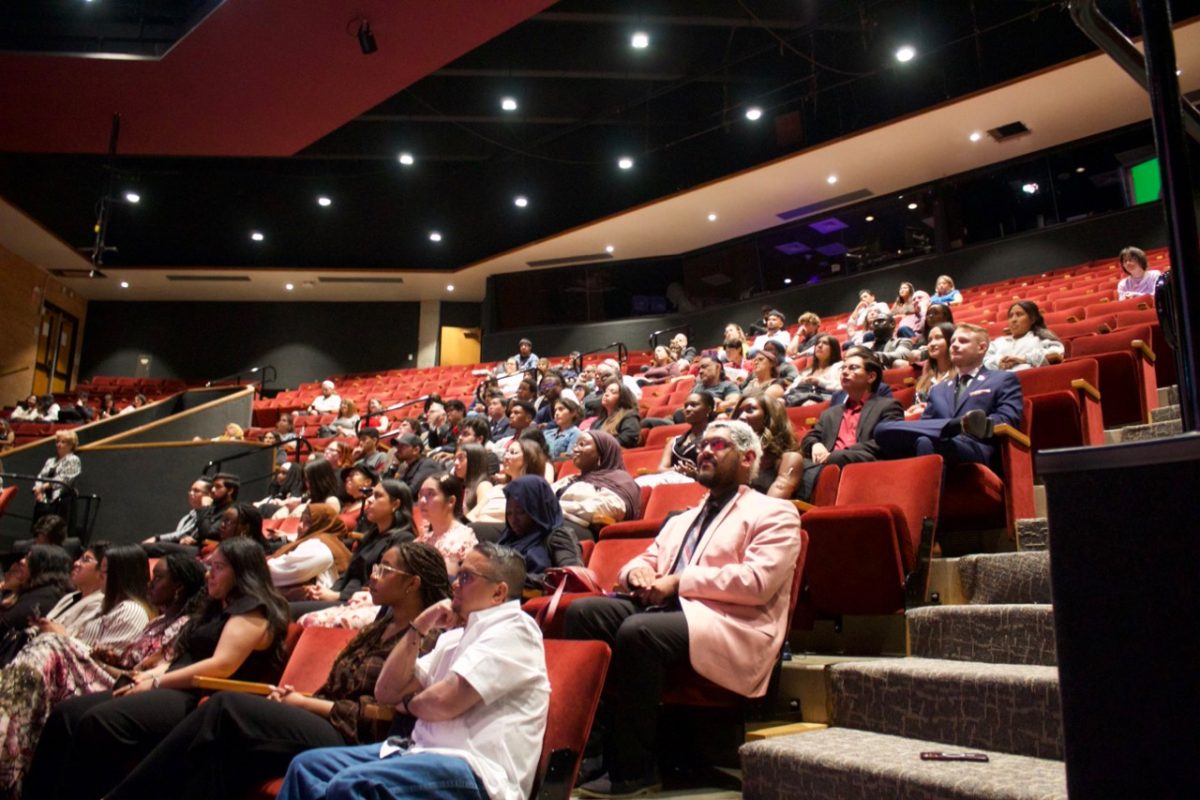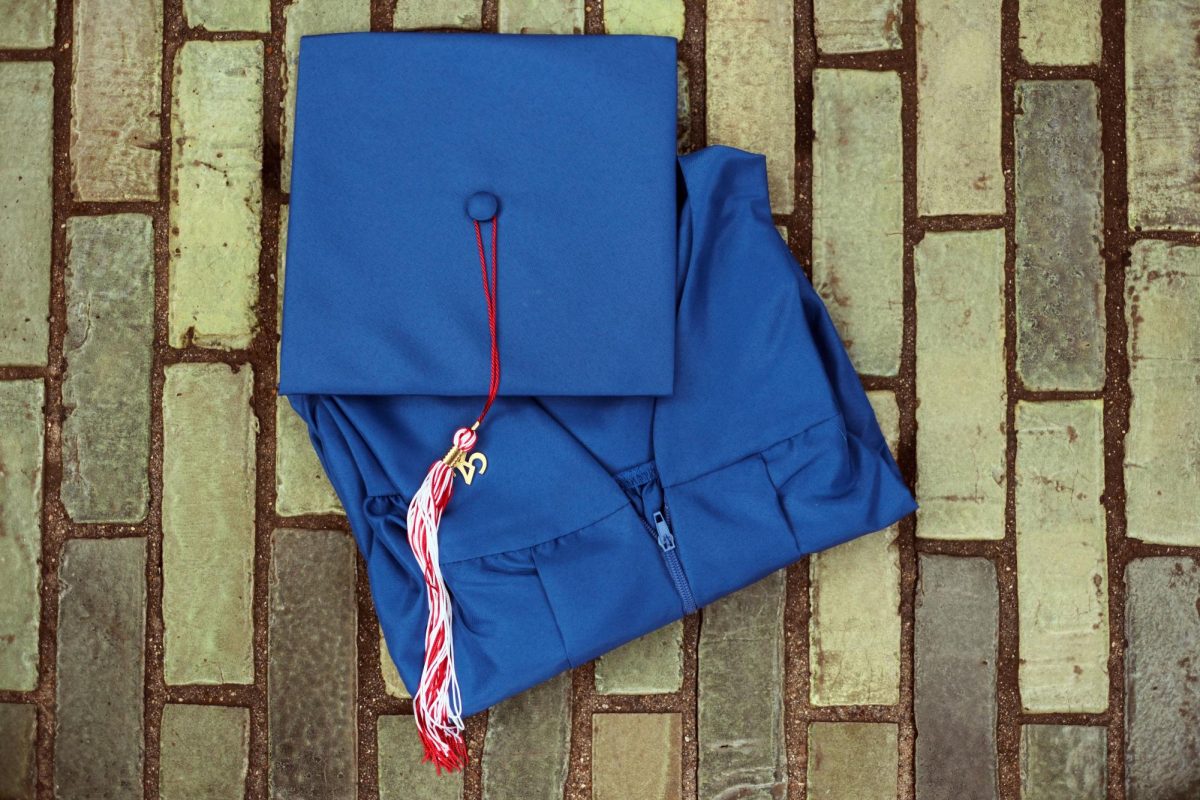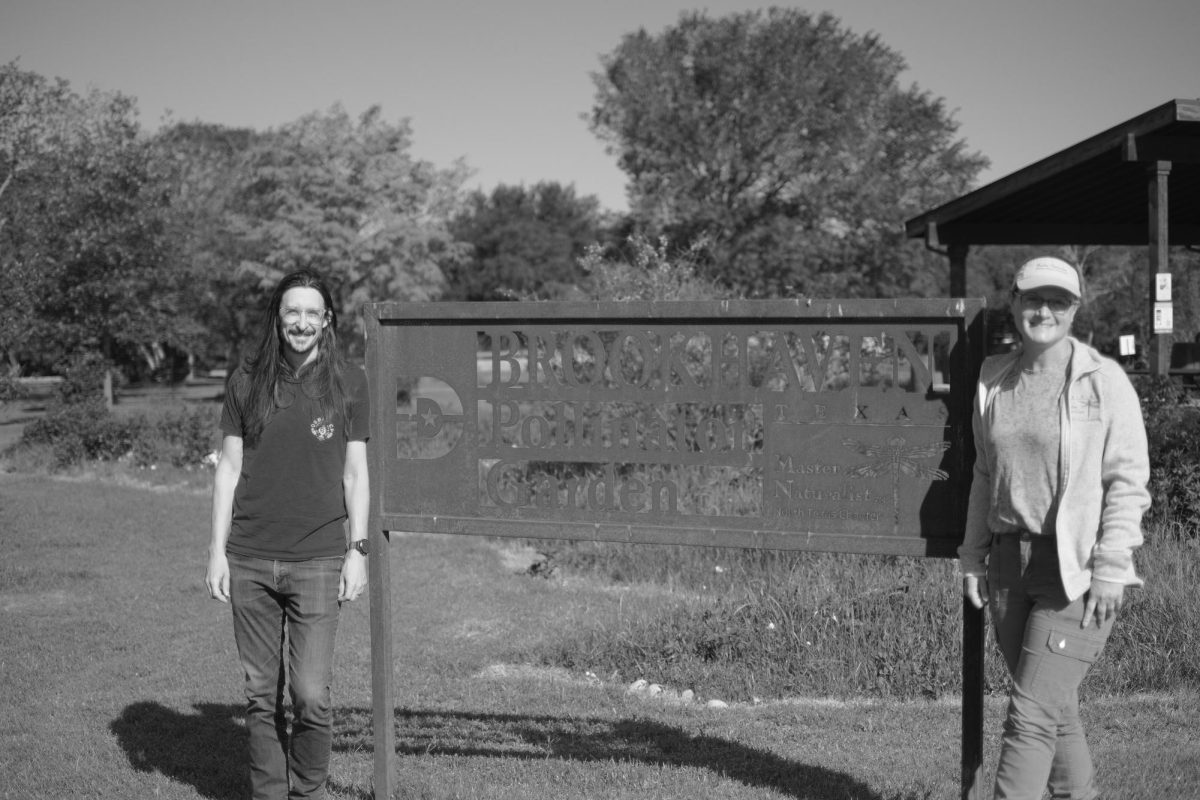Brookhaven astronomy department holds a watch party on campus to safely view the solar eclipse.
By Juan Betancourt
Sports/Web Editor

Jordan Picazo, a student, observes the solar eclipse through a telescope as husband Irvin Picazo watches.
The Brookhaven College astronomy and physics department hosted an event Aug. 21 where students, staff and faculty saw the first total solar eclipse visible in the U.S. in 38 years.
Hundreds of Brookhaveans stood between K and X buildings, gazing at the sun and moon as the sky turned a tint of gray. The darkened sky was similar to what one would see wearing a pair of lightly tinted sunglasses.
Dallas was one of many cities across the nation that experienced the phenomenon. Locally, the maximum occurred at 1:09 p.m. when the moon blocked about 76 percent of sunlight.
The eclipse began at 9:06 a.m. on the west coast and ended at 4:06 p.m. on the east coast, according to NASA.
States along the path of totality, where the moon completely blocked the sun, included Oregon, Idaho, Wyoming, Montana, Nebraska, Iowa, Kansas, Missouri, Illinois, Kentucky, Tennessee, Georgia and North and South Carolina, according to NASA.
In Dallas, first contact was at 11:40 a.m. when the moon began to block the sun and slightly darken the surrounding atmosphere, according to timeanddate.com.
Slowly, the moon shifted and covered the sun, forming a solar crescent. By 1:09 p.m., the eclipse reached its peak, which lasted about two minutes.
The eclipse ended at 2:39 p.m. as the moon moved past the sun, according to timeanddate.com.
It is not safe to view an eclipse directly with the naked eye because the sunlight can cause permanent eye damage, according to NASA.
A limited supply of eclipse glasses were handed out to attendees. The glasses blocked harmful radiation from the sun and helped viewers see the eclipse.
Volunteers guided attendees to safely view the eclipse with provided safety equipment that blocked the sun’s harmful rays and allowed spectators to observe the phases of the eclipse.
Ruby Hernandez, a student, was one of many attendees. She said it was exciting to see a solar eclipse for the first time.
Chris Casson, a mathematics adjunct, said the telescopes had special solar filters that allowed them to withstand the reflection of the sun. Two telescopes, a five-inch and an eight-inch Cassegrain telescope, automatically tracked the motion of the sun as it moved across the sky.
An 80-millimeter Celestron, a refractor telescope, and two binoculars were also available for Brookhaveans to use.
“This was very helpful,” Madhur Krishna Shrestha, a student, said. “I’m really glad that the school did this.”
A sun spotter, a wooden folded- Keplerian telescope, is used to observe sunspots. It was pointed toward the sun and projected an image of the eclipse on a white surface.
Two pieces of welding glass were also set up for Brookhaveans to see the eclipse and take photos using their smartphones.
Chris Gibson, a math tutor, helped with the event and said it was fun to help Brookhaveans by explaining and showing them how to see the eclipse with the binoculars and welding glass.
The next total eclipse will be visible April 8, 2024, according to NASA. Dallas will experience total darkness during that eclipse.






